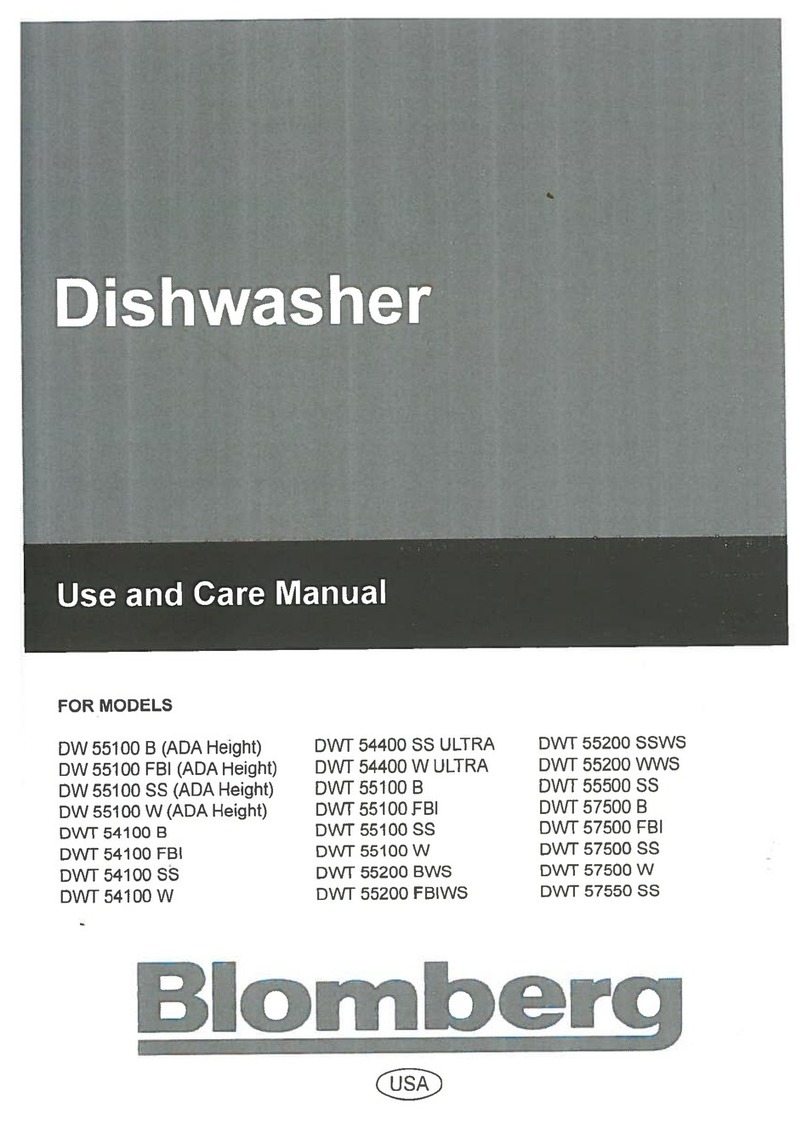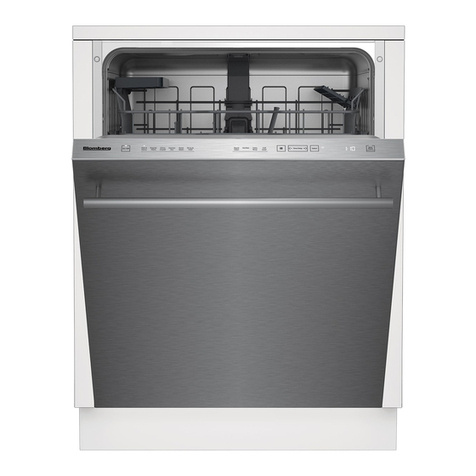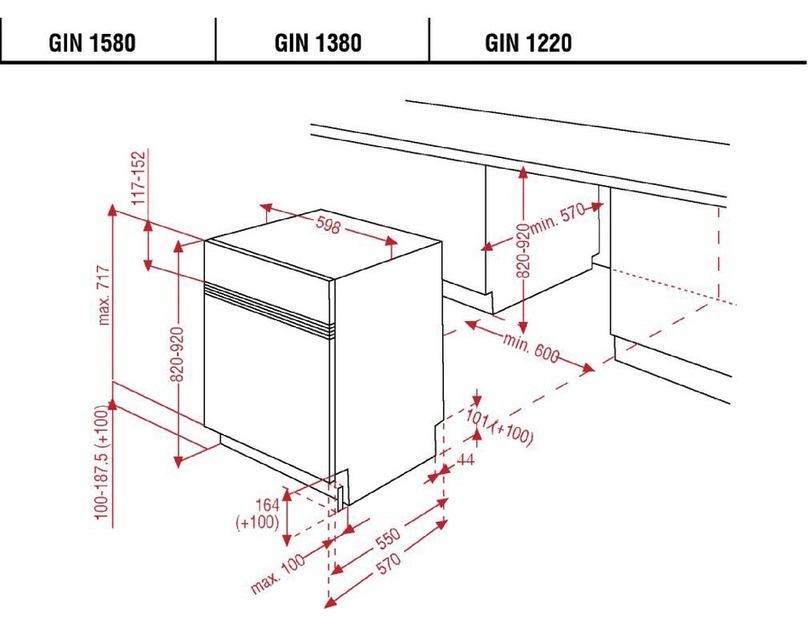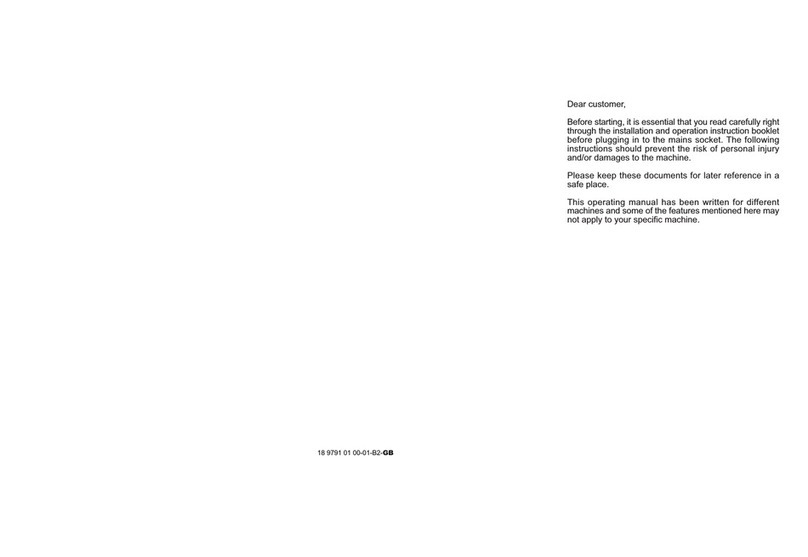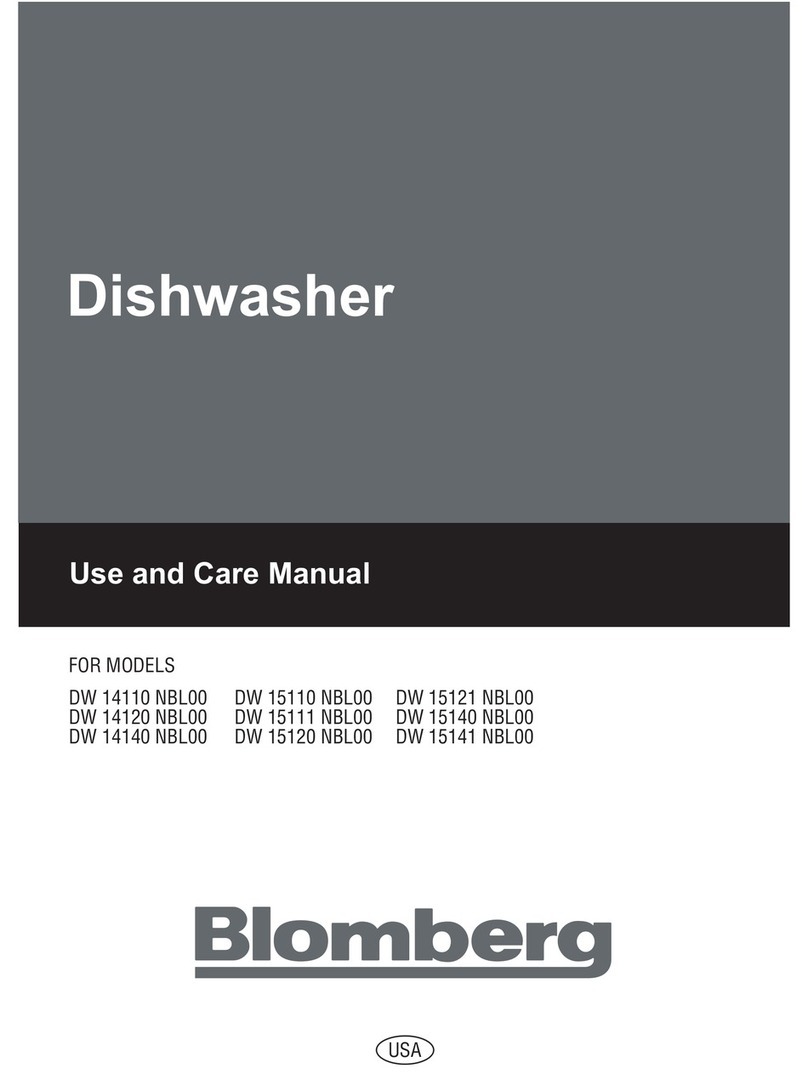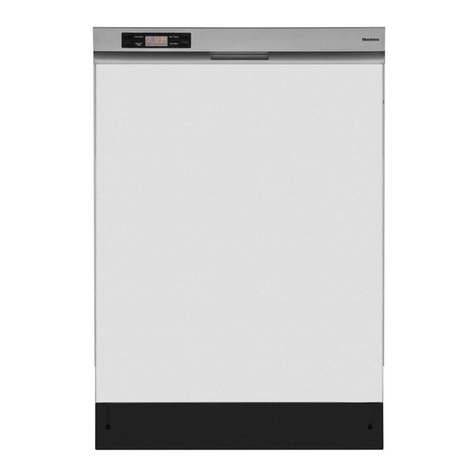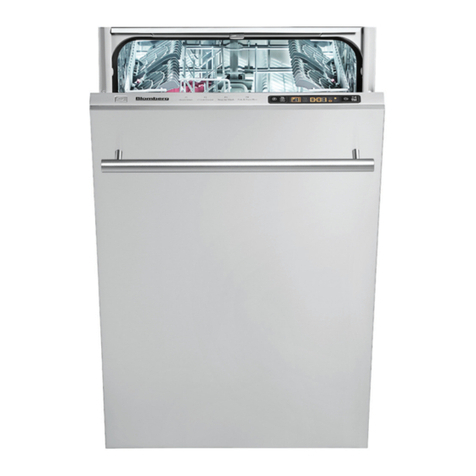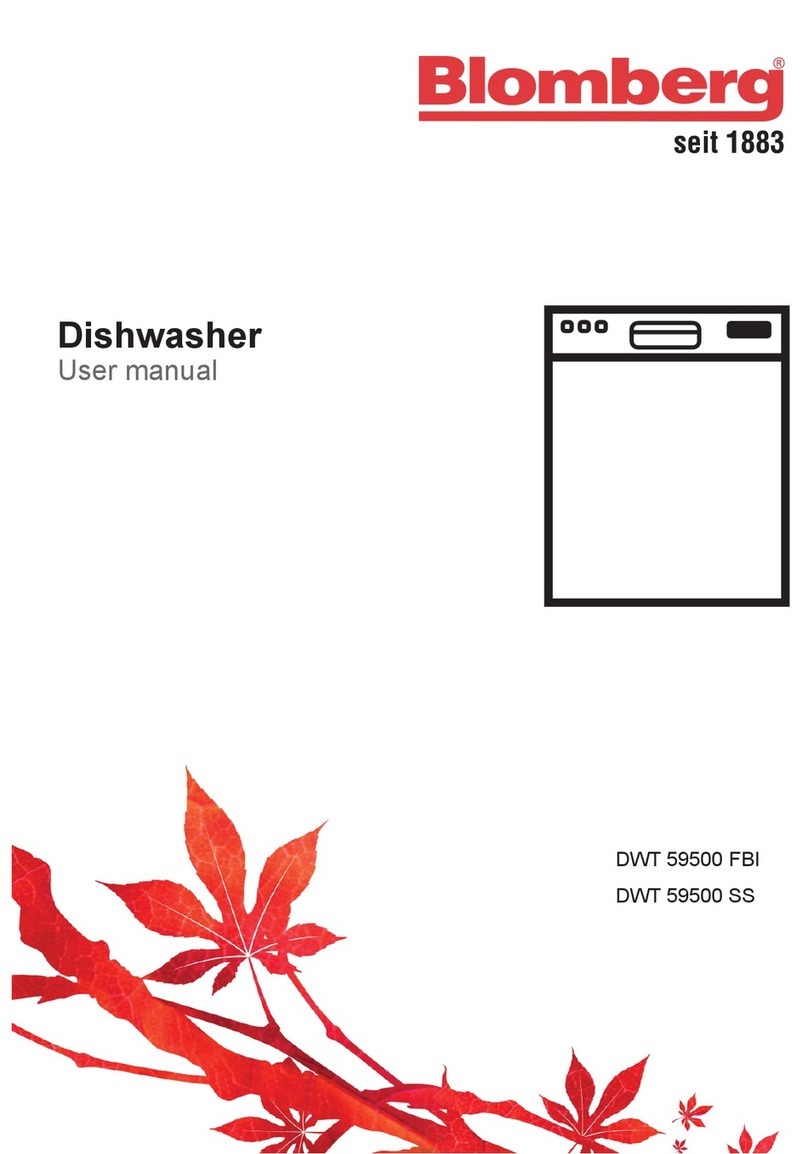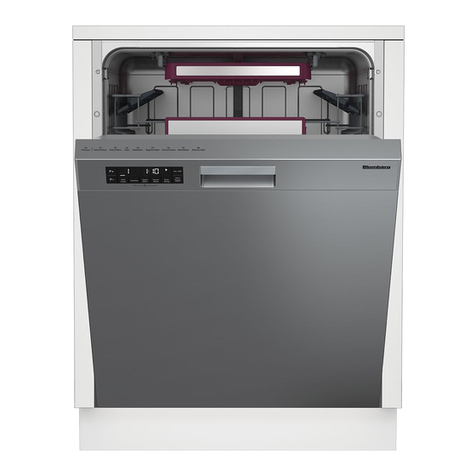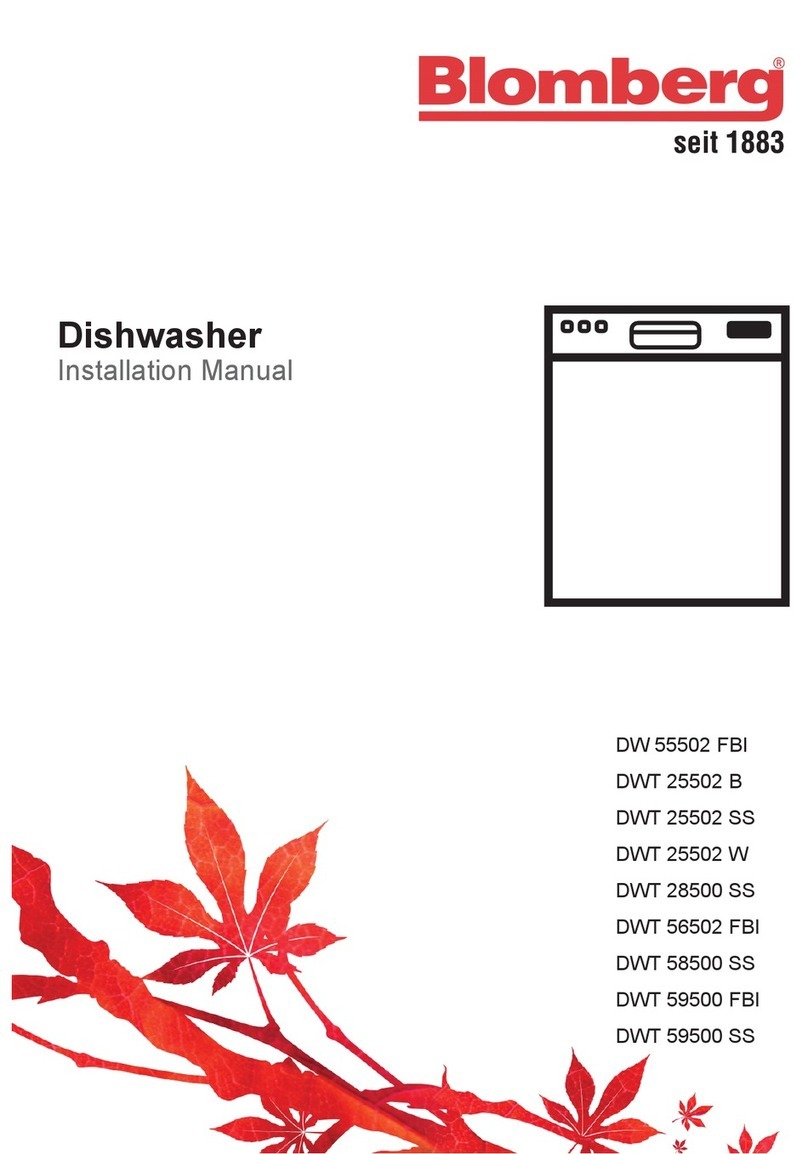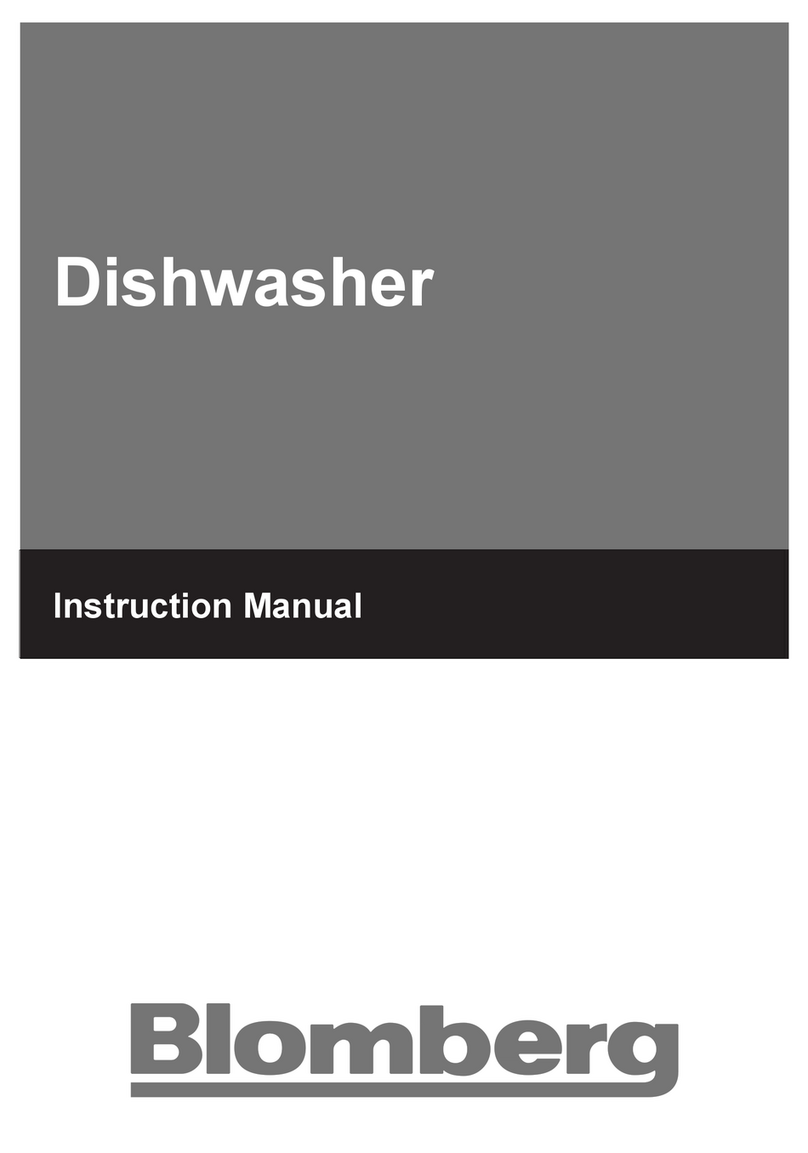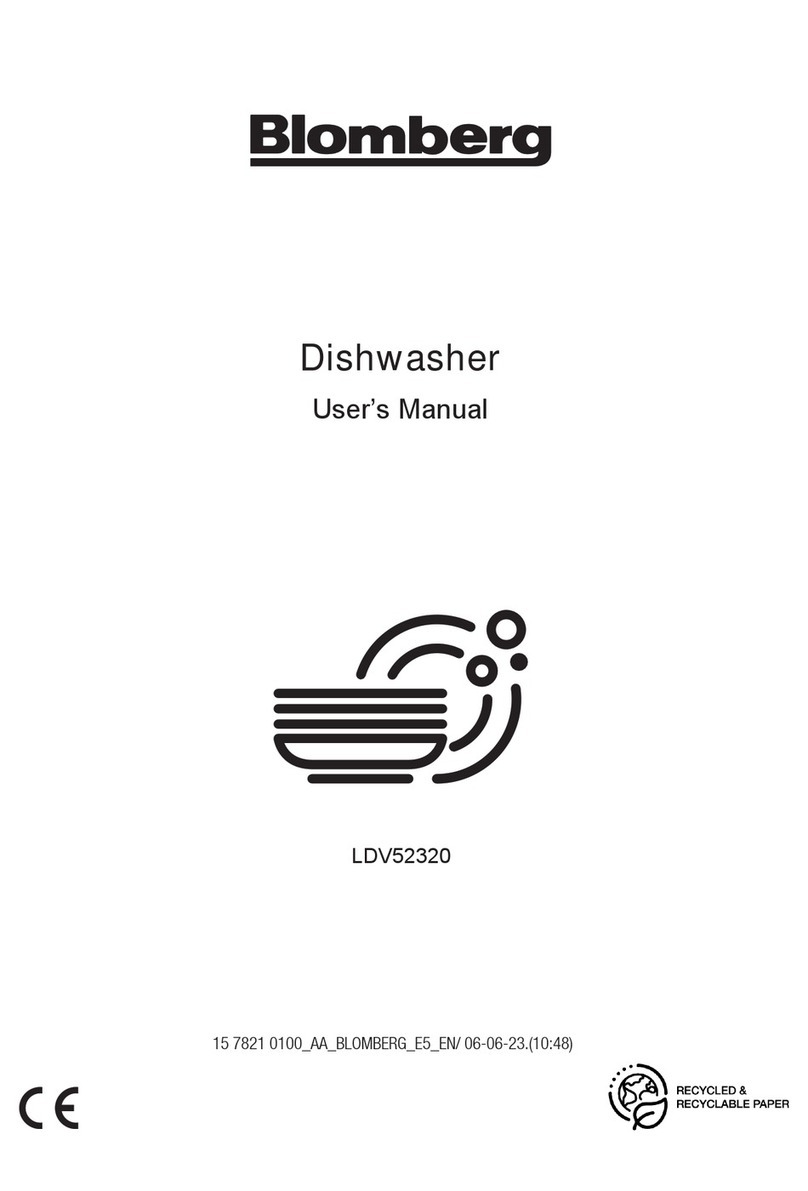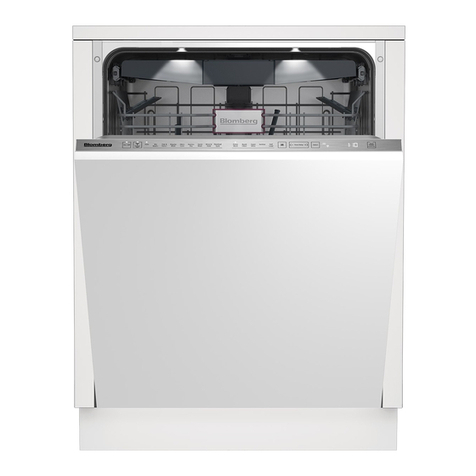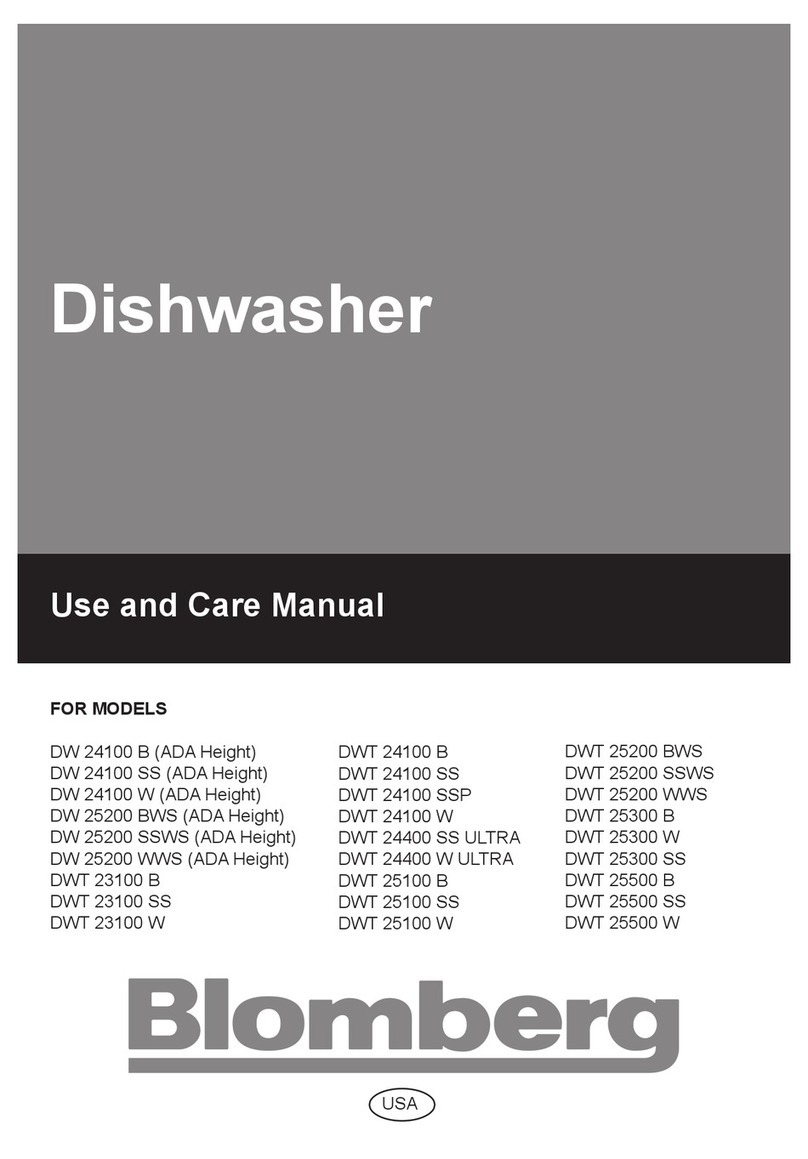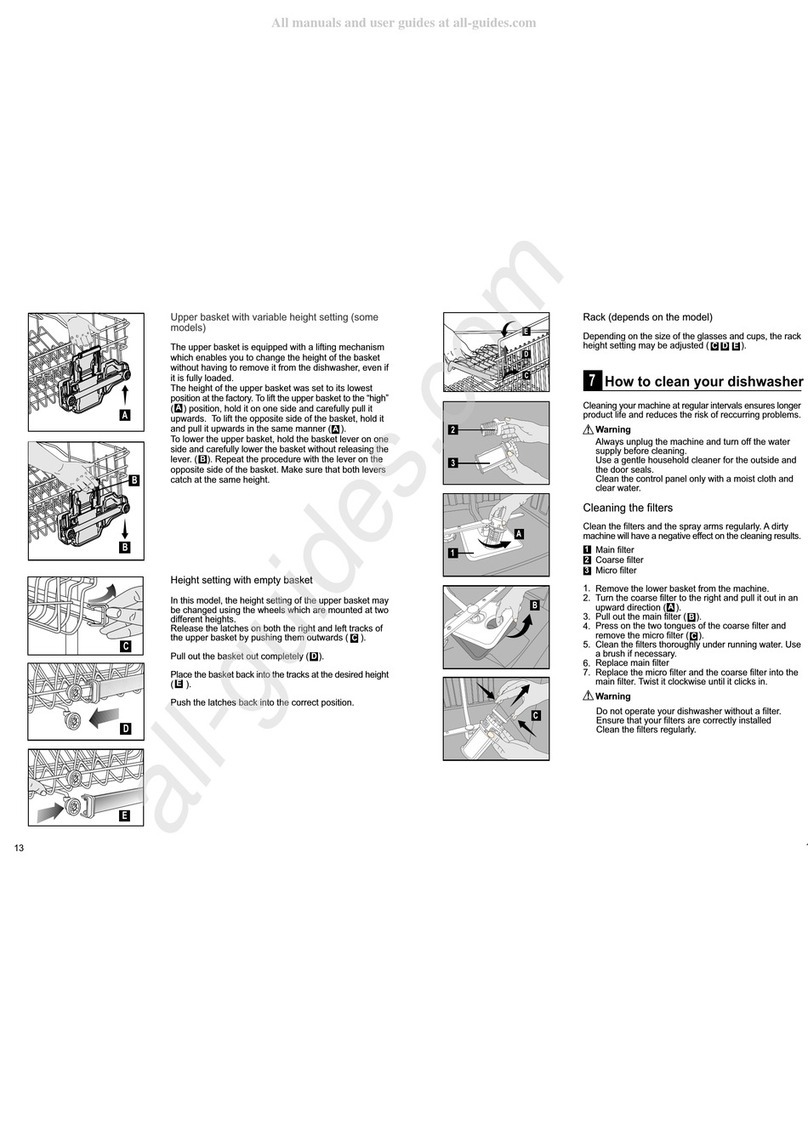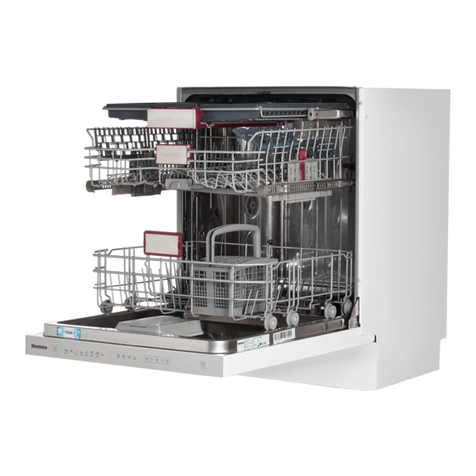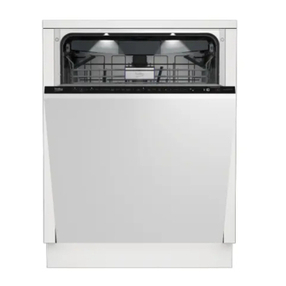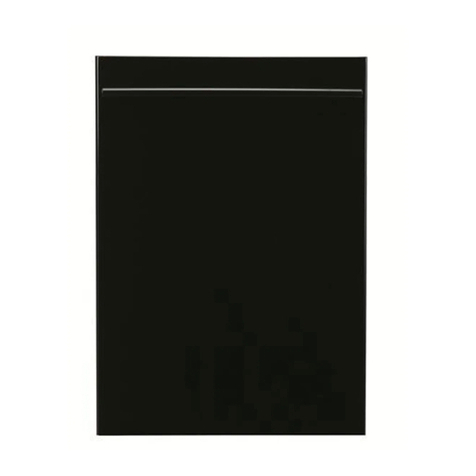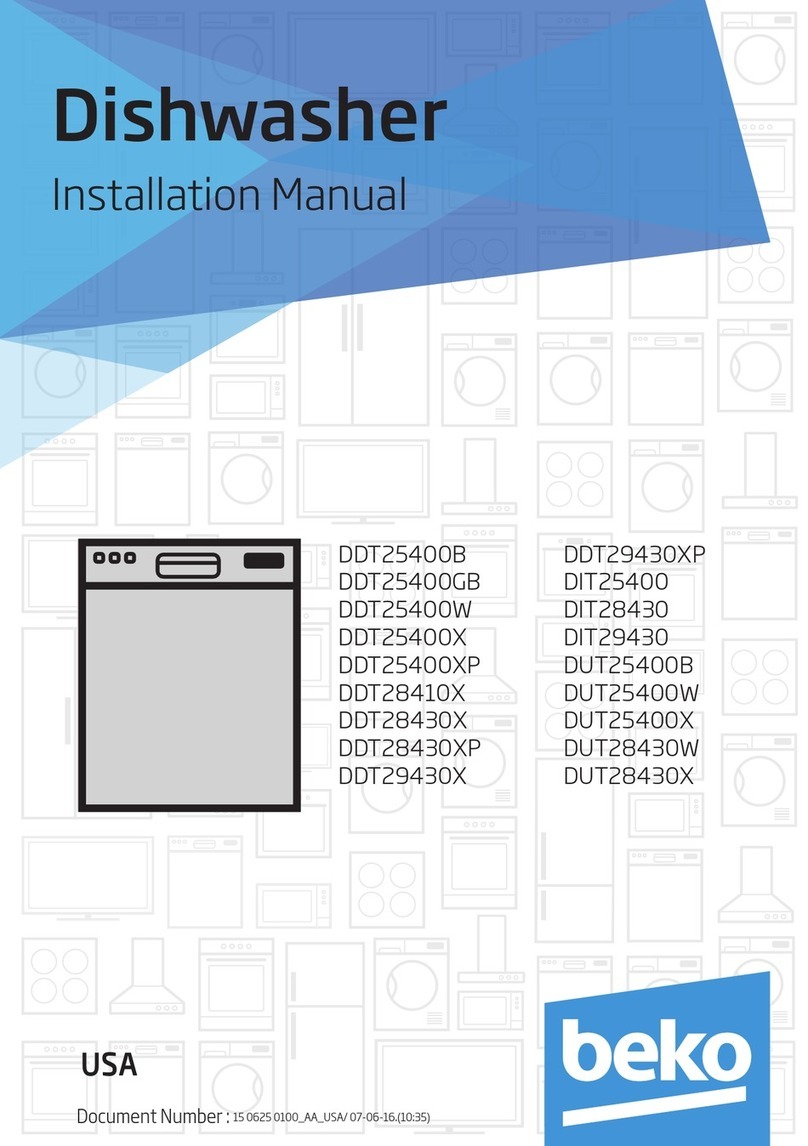SAVE THESE NSTRUCT ONS
=Do not install or store the dishwasher where it
can be exposed to below freezing temperatures
or exposed to weather.
=Dishwasher must be secured to adjacent
cabinetry using the brackets provided. Failure
to do this may cause damage to property or
bodily injury.
=Connect to a properly rated, protected and sized
power supply circuit to avoid electrical overload.
The dishwasher is designed for an electrical
supply of 12 V (volts), 6 Hz (hertz), AC,
connected to a dishwasher-dedicated, properly
grounded electrical circuit with a fuse or breakers
rated for 15 amperes. Electrical supply
conductors shall be a minimum of # 14 AWG
copper wire rated at 75 °C (167 °F) or higher.
These requirements must be met to prevent
injury and machine damage. Consult a qualified
electrician if in doubt.
=Do not use any extension cord or portable outlet
device to connect the dishwasher to a power
supply.
2. NSTALLAT ON
WARNING
When installing the dishwasher, follow basic
precautions, including the following:
=The dishwasher installation must be performed
in accordance with the installation manual. If
you did not receive an installation manual order
it by calling 1-800-459-9848 or you may also
download it from our web site at
www.Blombergappliances.com
=Installation, maintenance and repair should be
performed by a qualified installer. Work by
unqualified persons could be dangerous and
may void the warranty.
=Do not operate the appliance if damaged,
malfunctioning, partially disassembled or if it has
missing or broken parts.
=Before installation or service, disconnect the
power supply to the work area by unplugging
the unit, "tripping" the circuit breaker or removing
the fuse.
=Only connect the dishwasher to the power supply
when all installation and plumbing work is
complete.
WARNING
2
=Do not store or use flammable liquids or vapors
in the area of the dishwasher.
=When loading items to be washed, position sharp
items so that they are not likely to damage the
door seal and load sharp knives with the handles
up to reduce the risk of cut-type injuries.
=Do not wash plastic items unless they are marked
dishwasher safe or the equivalent. For plastic
items not so marked, check the manufacturers
recommendations.
=If a malfunction occurs, switch off the appliance
and turn off the water supply to the dishwasher.
=Before cleaning or carrying out maintenance,
switch off the appliance, disconnect the power
plug and turn off the water supply.
=Repairs and technical modifications must be
carried out exclusively by a qualified technician.
=If the dishwasher is not in use for an extended
period of time (i.e. vacation home), we
recommend you check that the baskets are
empty, leave the inside of the dishwasher clean,
leave the door cracked open to allow air to
circulate and turn off both the power and water
supply to the dishwasher.
=Remove the door to the washing compartment
when removing an old dishwasher from service
or discarding it. Ensure that the appliance
presents no danger to children while being stored
for disposal.
=Old appliances may contain materials that can
be recycled. Please contact your local recycling
authority about the possibility of recycling these
materials.
Danger of suffocation!
Ensure that any plastic wrappings, bags, small
pieces etc. are disposed of safely and kept out
of the reach of children.
